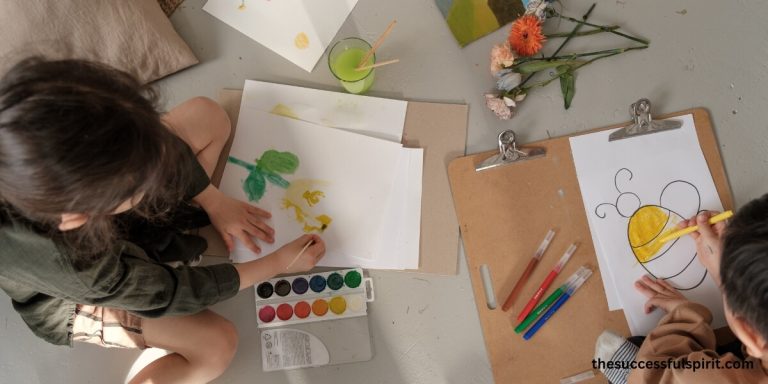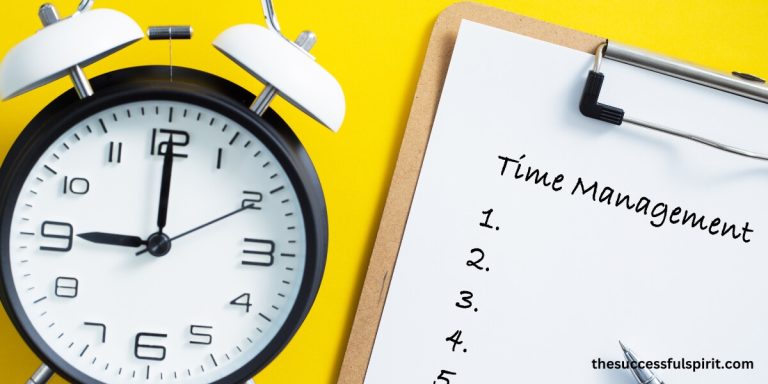How to Teach Time Management for Kids Using a Timer
How to Teach Time Management for Kids Using a Timer
Many children struggle with managing time effectively. Whether it’s homework, chores, or screen time limits, kids often get distracted or misjudge how long a task will take. Without structure, they may procrastinate, rush through tasks, or lose focus.
Using a timer is one of the most effective ways to help kids understand time, stay accountable, and develop good habits. Timers create a sense of urgency, make daily tasks feel more structured, and help children focus on what they need to do.
By incorporating timers into daily routines, kids can learn responsibility, improve time awareness, and feel more in control of their schedule.

Why Kids Struggle with Managing Time
Many children do not naturally understand how long tasks take or how to manage their time efficiently.
Common Challenges Kids Face with Time Management:
- Underestimating time – Kids may think a task will take only five minutes when it takes 30.
- Getting distracted easily – Toys, electronics, and other distractions can make tasks take much longer than they should.
- Lack of urgency – Without a deadline, kids may take time to complete a task or lose focus.
- Struggling with transitions – Moving from one task to another can be difficult without a structured schedule.
Timers help solve these challenges by making time visible, measurable, and structured.
3. The Benefits of Using Timers for Kids
Using timers in daily routines provides many benefits beyond just finishing tasks faster.
Why Timers Are a Great Tool for Kids:
- Encourages focus – Kids know they have a set time to complete something, reducing distractions.
- Teaches responsibility – They learn to take charge of their own schedule.
- Reduces procrastination – Deadlines encourage kids to start tasks sooner.
- Makes time fun – Timers turn time management into a game instead of a chore.
Timers are especially useful for homework, chores, screen time management, and structured playtime.
4. Choosing the Right Timer for Your Child
Different types of timers work best depending on a child’s age and needs.
Types of Timers:
| Type of Timer | Best For | Examples |
|---|---|---|
| Visual Timers | Younger kids who need a visual cue of time passing | Time Timer, Sand Timers |
| Digital Timers | Older kids who prefer numbers and alarms | Kitchen Timer, Smartwatch Timers |
| Timer Apps | Kids who enjoy interactive and gamified timers | Forest App, Pomodoro Kids |
Choosing the right timer makes time management more engaging and effective.
Teaching Kids to Use a Timer for Daily Tasks
Timers work best when they are integrated into specific daily activities.
Ways to Use Timers for Different Tasks:
- Homework & Study Time: Set a 25-minute timer using the Pomodoro technique (work for 25 minutes, take a 5-minute break).
- Chores: Give kids a 10-minute countdown to clean their room or put away toys.
- Screen Time Limits: Use a timer to track TV or tablet time to prevent overuse.
- Morning & Bedtime Routines: Set a 5-minute timer for brushing your teeth or getting dressed.
By making timers part of daily life, kids naturally develop better time management skills.
Making Time Management Fun with Timers
Timers don’t have to feel like a restriction. When used creatively, they make time fun and motivating.
Fun Timer-Based Activities:
- “Beat the Clock” Challenges: Challenge kids to finish a task before the timer runs out.
- Reward System: Earn points or stickers for completing tasks within the set time.
- Racing Against Siblings or Parents: Create a friendly competition to finish chores faster.
Gamifying time management makes kids more excited to follow routines.
7. Helping Kids Develop a Healthy Relationship with Time
Timers should be used as a positive tool, not a form of pressure.
How to Teach Kids to Use Time Wisely:
- Let them set their own timers – Giving kids control makes them feel responsible.
- Encourage breaks – Teach them that breaks are essential for focus.
- Be flexible when needed – Allow extra time if necessary, so they don’t feel rushed.
A healthy relationship with time encourages long-term self-discipline.
8. Common Mistakes Parents Make When Using Timers
Timers work best when used correctly. Avoiding common mistakes ensures they are helpful rather than stressful.
Mistakes to Avoid:
- Setting unrealistic time limits – Kids need enough time to complete tasks properly.
- Making timers feel like punishment – Timers should be seen as a tool, not a strict rule.
- Not explaining the purpose of the timer – Kids should understand why the timer is helpful.
A positive approach ensures timers become a fun and effective learning tool.
How to Transition Kids Away from Relying on Timers
Over time, kids should develop natural time awareness and not need a timer for everything.
How to Reduce Timer Use Gradually:
- Encourage self-monitoring – Let kids track their own time.
- Use clocks instead of timers – Teach them how to read a clock for time awareness.
- Introduce time estimation activities – Have kids guess how long a task will take.
As kids become more responsible, they will rely less on timers and more on self-discipline.
Helping Kids Understand Time Without a Timer
Timers are a great tool for introducing time management, but eventually, kids should develop a natural sense of how long tasks take without always relying on an external reminder.
How to Teach Time Awareness Without a Timer
- Use Real-Life Comparisons – Explain time using everyday events:
- “Brushing your teeth takes about the same time as singing the ABC song twice.”
- “It takes 10 minutes to pack your bag, which is as long as watching a short cartoon episode.”
- Encourage Estimations – Before starting a task, ask:
- “How long do you think this will take?”
- After the task: “Was your guess correct?”
- This builds awareness of how long different activities take.
- Introduce Routine-Based Timing – Help kids understand time by associating activities with daily routines.
- “We eat dinner at 6 PM, and right after that, you have 30 minutes to do homework.”
- “At 8 PM, it’s time to get ready for bed.”
- Use Visual Schedules with Time Blocks – Instead of setting a timer for everything, transition to a clock-based schedule:
- “You have from 4:00 to 4:30 PM to finish your reading assignment.”
- “From 6:00 to 6:30 PM, we have dinner together.”
- Teach Kids to Track Their Own Time – Once kids are comfortable with timers, let them manage their schedules.
- Give them a checklist and ask them to track how long each task takes.
- Encourage self-monitoring instead of always using external reminders.
Gradually shifting from timers to independent time tracking helps kids develop self-discipline and time awareness.
The Best Timer Tools and Apps for Kids
If you’re looking for kid-friendly timers, here are some great options:
| Timer Type | Best For | Examples |
|---|---|---|
| Visual Timers | Younger kids who need to “see” time passing | Time Timer, Sand Timers, Hourglass Timers |
| Digital Timers | Older kids who prefer numbers and alarms | Kitchen Timers, Stopwatch, Smartwatch Timers |
| Timer Apps | Kids who enjoy interactive, gamified timers | Forest, Pomodoro Kids, Brili Routines |
How to Choose the Right Timer for Your Child:
- For preschoolers (ages 3-5): Sand timers or Time timers provide a visual cue of time passing.
- For elementary school kids (ages 6-12): Digital countdown timers and apps like Brili Routines help build structured habits.
- For teenagers: Apps like Forest or Pomodoro Kids make time tracking more interactive and engaging.
Using the right timer for your child’s needs makes time management easier and more enjoyable.
Helping Kids Transition Between Tasks with a Timer
One of the biggest struggles kids face with time management is switching from one activity to another. Whether it’s transitioning from playtime to homework or bedtime, kids often resist stopping what they are doing.
How to Use a Timer to Improve Transitions:
- Give a Warning Before Time is Up – Instead of stopping abruptly, use a 5-minute warning before the next task starts.
- “You have 5 minutes left of playtime before we start homework.”
- Use a Gentle Countdown – Gradually count down to the transition to avoid a sudden stop.
- “3 more minutes… 2 more minutes… 1 more minute… Time to switch!”
- Let the Child Pause the Timer – Giving kids some control over stopping the timer reduces resistance.
- “When you hear the beep, press the button to stop the timer yourself!”
- Offer a Choice for What’s Next – Instead of saying, “Now it’s homework time,” give options:
- “Would you like to start with reading or math first?”
- “Would you rather do your chores now or after dinner?”
By making transitions smoother and more predictable, kids feel more in control and are less likely to resist the change.
How to Handle Resistance to Timers
Some kids resist using timers because they feel too restricted or don’t like being told what to do.
Why Some Kids Resist Timers:
- They feel rushed or pressured by a countdown.
- They associate timers with punishment instead of a helpful tool.
- They struggle with transitions and don’t want to stop what they’re doing.
How to Make Timers Feel Positive:
- Let Kids Set Their Timer – Give them some control over time limits.
- “How much time do you think you need for this task? Let’s set the timer together!”
- Use a Reward System – Instead of timers being a restriction, turn them into a challenge with rewards.
- “If you finish your homework before the timer rings, you get 5 extra minutes of playtime!”
- Be Flexible When Needed – If a child needs more time, don’t force them to stop abruptly.
- “You’re almost done! Would you like 5 more minutes?”
- Make Timers Fun – Choose silly alarms, colors, or sounds that kids enjoy.
The goal is to help kids see timers as a helpful tool, not as something that forces them to rush.
The Long-Term Benefits of Teaching Time Management with Timers
Using timers helps children develop lifelong time management skills.
How Timers Improve Long-Term Skills:
- Better Focus & Concentration – Kids learn to stay on task without distractions.
- Increased Independence – They take ownership of their schedule.
- Improved Self-Discipline – They manage their time responsibly.
- More Confidence & Responsibility – Completing tasks within a set time builds self-esteem.
As children grow older, they will rely less on timers and more on internal time awareness, making them more productive and efficient in school and life.
Conclusion
Timers are one of the best tools for teaching time management for kids. They create a structured, visual way to help children focus, stay accountable, and complete tasks efficiently.
Key Takeaways:
- Timers make time visible and help kids manage daily tasks.
- Different types of timers work best for different ages and needs.
- Using timers for homework, chores, and screen time creates structure and accountability.
- Making timers fun with games and rewards keeps kids motivated.
- Over time, kids learn to manage their time independently without needing a timer.
With consistent use and a positive approach, timers can help kids develop strong time management habits that last a lifetime.
FAQs
1. What is the best type of timer for young kids?
For younger children, visual timers like Time timers or sand timers work best because they help kids “see” how much time is left.
2. How long should I set a timer for my child’s tasks?
It depends on the task. Short tasks (5-10 minutes) are best for chores, while longer timers (20-30 minutes) work well for homework and reading.
3. Should I use a timer for screen time limits?
Yes! A clear time limit helps prevent excessive screen time. Set the timer for 30-60 minutes and let your child see how much time is left.
4. How do I stop my child from ignoring the timer?
Make it engaging! Let them set the timer themselves or use fun alarms instead of generic beeps.
5. When should I stop using timers for my child?
As kids develop better time awareness, gradually reduce timer use and encourage them to track time independently.






